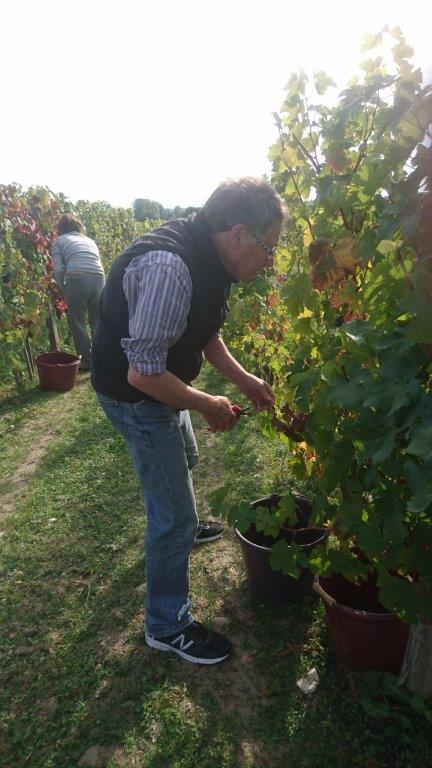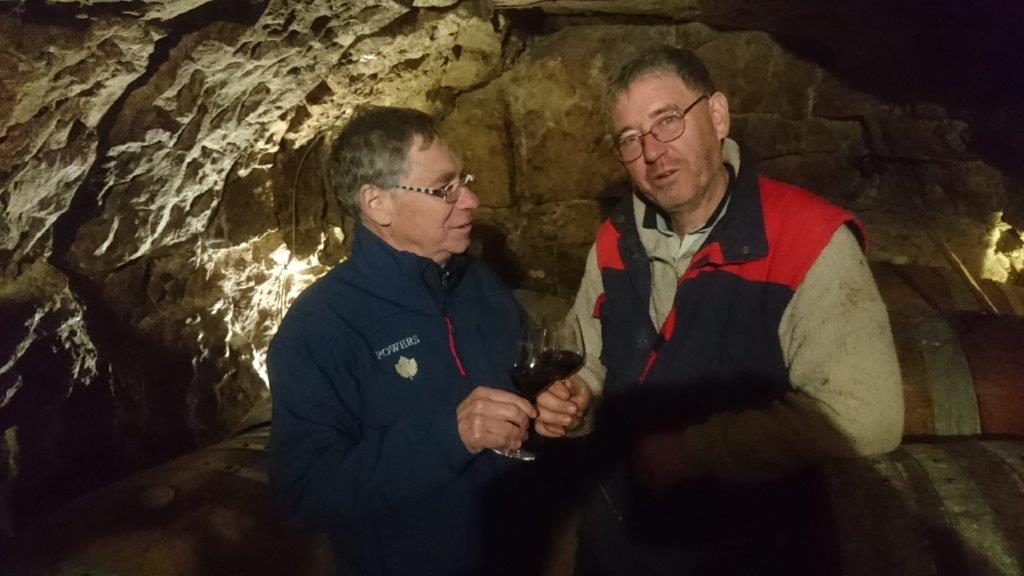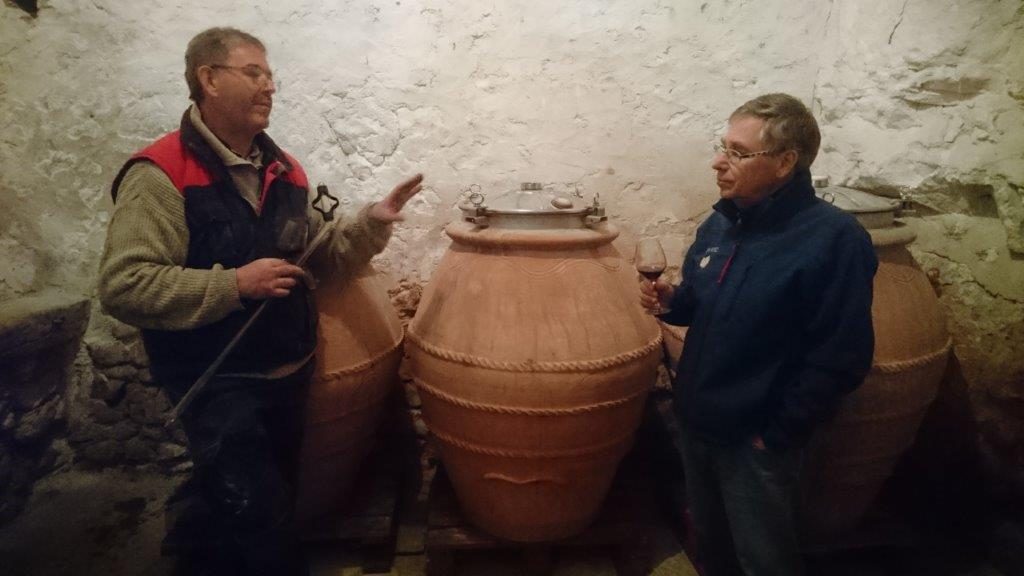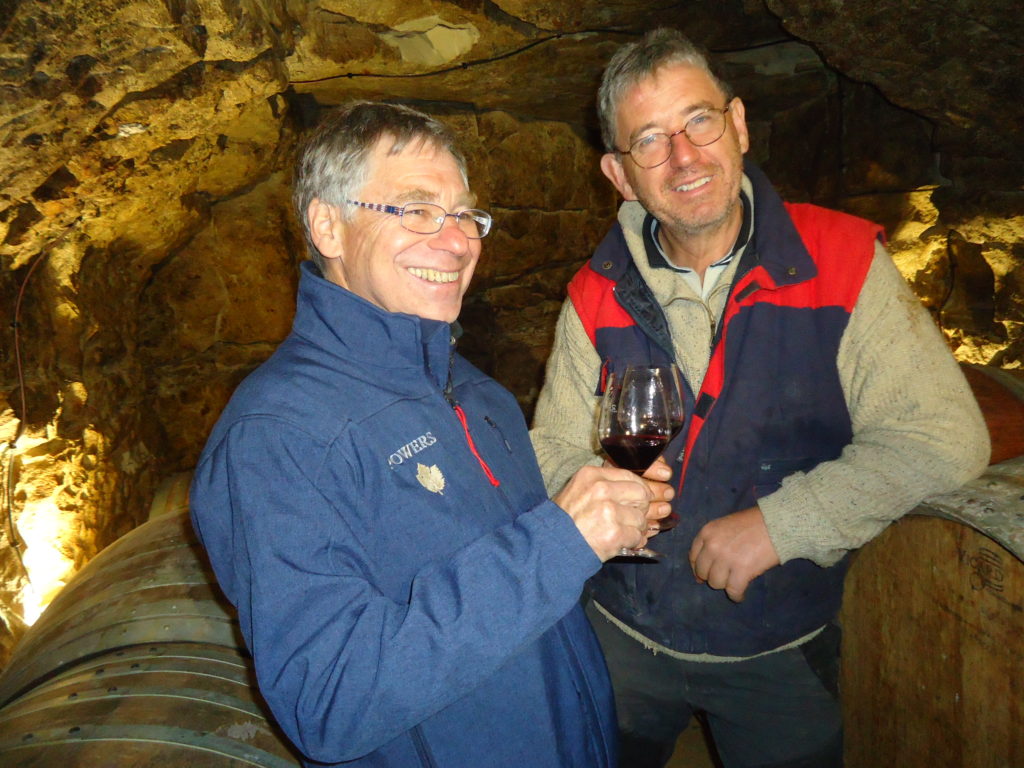




 Pascal and Beatrice Lambert estate was founded in 1987 and in 2005 were certified organic and biodynamic. Pascal’s family has been in the wine making business for years but he branched out on his own and they have built this from the ground up.
Pascal and Beatrice Lambert estate was founded in 1987 and in 2005 were certified organic and biodynamic. Pascal’s family has been in the wine making business for years but he branched out on his own and they have built this from the ground up.
The field “The Chesnaies” currently consists of 14 hectares, it is located in the Coteaux Cravant. The town of Cravant Coteaux represents about 40% of the Chinon appellation.
The grapes used in the field are Cabernet Franc for the reds and rosés, and Chenin for white wine
Here are some viticultural practices in the field:
No chemical inputs to the soil. Tillage under the foot in spring and summer avoiding competition of the grass under the vines.
Between rows, different plants adapted to the soil are planted annually. And mustard, oats, rapeseed, rye facilitate capture ground copper doses or suffers sulphated or assist the development of nitrogenous substances, essential for the fermentation of the grapes. The roots of these plants are living the deep soil and break the monoculture of the vine.
Contribution in the vineyards of a compost made of 8 to 12 months and consists of fermenting marc, tree bark (BRF), manure from cattle and horses, sprinkled with wine effluents from exploitation, biodynamic preparations, as well as lactic acid bacteria manufactured on the holding
Using biodynamic preparation 501 silica to light (cosmos) and dung horn 500 for the terroir effect.
Using foliar treatment plants (herbal tea nettle, nasturtium, yarrow, etc.)
Important budding manual work (greedy and between cores). Little trimming height (attachment of strands) to increase the leaf surfaces.
Maximum use of vine plants to mass selection (not cloned, selection of the best vines generation to generation)
Experimentation of génodique, new approach to biology based on the diffusion of “protéodies” sequences specific sounds protein, and thereby limiting the growth of certain pathogens and reduce the mortality of stocks due to the Esca (wood disease ). More information on http://www.genodics.com .
In autumn, the harvest is done manually. In the winery, the grapes are manually sorted on carpets and stalked berries are dumped into tanks with the help of conveyor belt (not tap), which avoids too violent crushing of the grapes. In vessels, fermentation slowly and naturally held without adding yeast and farms have adapted to different soils.
These natural methods to enhance the micro terroirs typicality
and offer personalized wines.
The vineyards of Chinon has several types of geological soils:
– The terroir of gravel: from the alluvial terraces of the right and left banks of the Vienne valley formed in the Quaternary (less than 15,000 years), composed by the plots of gravel and silicas.
– The clay-limestone: clay and limestone on Turonian under soil composed of chalk layers (limestone) deposited by the sea in the secondary era (less than 90 million years). These soils occupy the hillsides and plateaus that dominate the valleys.
– The terroir of flint clays: soil composed of flint clay (also called parakeets) from the weathering of geological senonian during the Tertiary.



